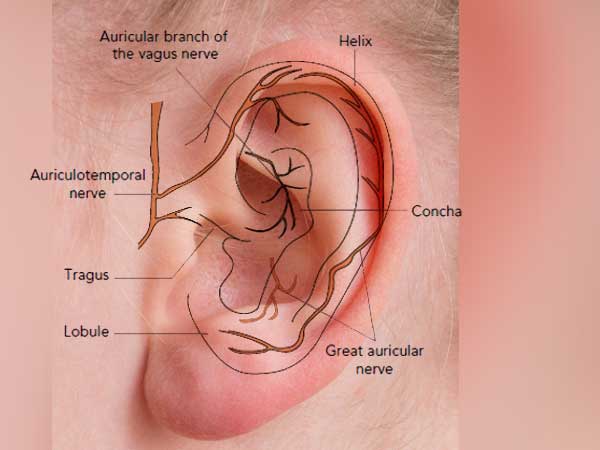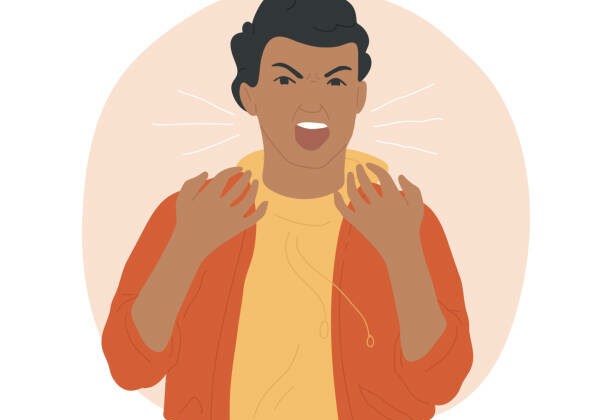Stimulation of the vagus nerve strengthens the communication between the stomach and the brain
Stimulation of the vagus nerve strengthens the communication between the stomach and the brain – Research findings provide new treatment options for depression, obesity and eating disorders
The nervous system takes in sensory stimuli, processes them and triggers reactions such as muscle movements or pain sensations. A few years ago, a network in the brain was identified that is coupled with signals from the stomach and presumably influences the human feeling of hunger and satiety. Now, a research team led by Prof. Dr. Nils Kroemer of the University Hospitals of Tübingen and Bonn has shown for the first time that non-invasive stimulation of the vagus nerve at the ear can strengthen the communication between stomach and brain within minutes. The study results are currently published in the renowned journal Brain Stimulation.
The vagus nerve is responsible for controlling many aspects of human behavior: This cranial nerve connects several important organ systems with the brain and thus supports the transmission of endogenous signals. These help, for example, in the goal-directed search for food by tuning the reward system for food stimuli when the stomach is empty. Previous research showed that the vagus nerve can regulate digestion via the brain. This mechanism is relevant for therapeutic applications because the vagus nerve can be stimulated non-invasively. With a new study, the team of PhD student Sophie Müller and Prof. Dr. Nils Kroemer addresses the previously unanswered question of how exactly the modulation via the brain works.
About the study
The team, consisting of scientists from the universities of Tübingen and Bonn as well as the German Institute of Human Nutrition in Potsdam and the German Center for Diabetes Research, studied a total of 31 participants. They combined stimulation of the vagus nerve at the ear with simultaneous recording of brain activation via functional magnetic resonance imaging (MRI) and a so-called electrogastrogram. The electrogastrogram involves placing electrodes – similar to an ECG – over the stomach to record signals from the digestive tract. “We showed for the first time that electrical stimulation strengthens the coupling between signals from the stomach and the brain – and we can do it within a few minutes,” Prof. Kroemer said. He leads a research group on the neurobiological basis of motivation, action, and desire (neuroMADLAB) in the field of translational psychiatry at the Department of Psychiatry and Psychotherapy at the University Hospital of Tübingen and has been Professor of Medical Psychology at the Department of Psychiatry and Psychotherapy at the University of Bonn since 2022.
The study results at a glance
The research team stimulated both the vagus nerve at the ear and, in a control condition, other nerves at the ear in participants. “We observed that vagus nerve stimulation increased coupling with signals from the stomach in the brainstem and midbrain,” explained Prof. Kroemer, continuing, “These regions are important because they are the first targets of the vagus nerve in the brain. Changes in the midbrain may already mediate our actions.” In addition, the researchers discovered that coupling with the stomach increased throughout the brain, particularly in regions that already communicate more strongly with the stomach before stimulation. Changes in coupling between the stomach and brain can be produced almost instantaneously and spread rapidly.
These findings may enable new therapeutic options. For example, Prof. Kroemer’s group is currently conducting further research into a possible application for depression, where changes in communication between the body and the brain are already considered a key factor. Likewise, in obesity and eating disorders, stimulation of the vagus nerve could help affected individuals to restore their perception of body signals in the future.
Full bibliographic information
Müller, Sophie, et. al. “Vagus nerve stimulation increases stomach-brain coupling via a vagal afferent pathway.” Brain Stimulation, September 3, 2022. DOI:





